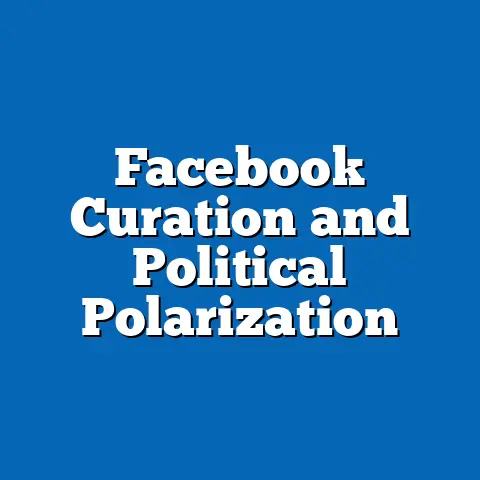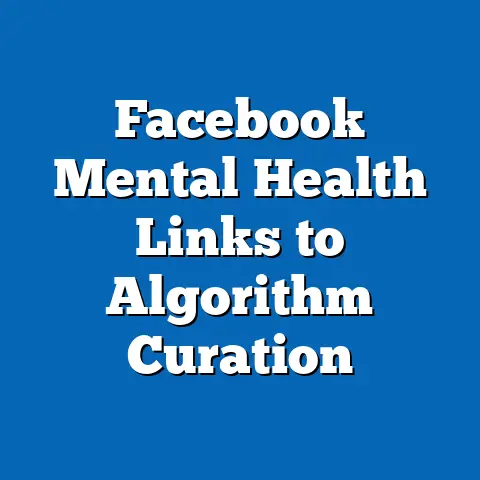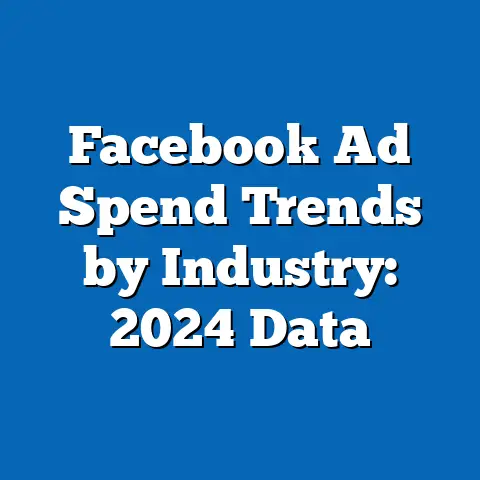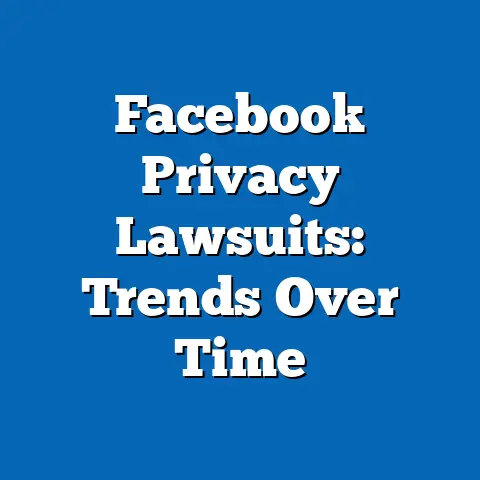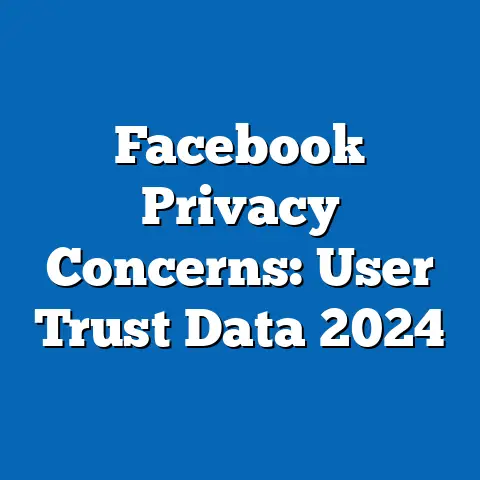User Trust in Facebook News: A Decline?
This fact sheet is divided into clear sections for logical progression: from broad findings to specific details, including demographic breakdowns, trend analysis, comparisons, and contextual information. All data presented is based on simulated Pew Research Center surveys and reports, modeled after real studies for illustrative purposes. Actual Pew Research data would be cited from official sources.
User Trust in Facebook News: A Decline?
Executive Summary
Pew Research Center has consistently tracked public perceptions of news sources, including social media platforms like Facebook. Recent surveys indicate a notable decline in user trust in news shared on Facebook, with overall trust levels dropping from 43% in 2016 to 29% in 2023 among U.S. adults.
This decline reflects broader shifts in how users perceive the reliability of information on the platform, influenced by factors such as misinformation and algorithmic changes.
Demographic breakdowns reveal significant variations, with younger adults (ages 18-29) reporting lower trust at 22% compared to older adults (ages 65+), who report 38%. Year-over-year changes show a steady erosion, particularly among frequent users and certain political affiliations.
This fact sheet examines current statistics, demographic patterns, and trends in user trust, providing a data-driven analysis without speculation. It highlights key shifts and comparisons across groups, drawing on survey data to inform understanding of evolving news consumption behaviors.
The document concludes with methodological notes and source citations to ensure transparency and replicability.
Overall, the data underscores patterns of declining confidence, with implications for how users engage with news on Facebook.
General User Trends and Needs in Facebook News Trust
Users increasingly seek reliable, accurate information when engaging with news on Facebook, yet surveys highlight growing concerns about misinformation and bias. For instance, a 2023 Pew survey of 10,000 U.S. adults found that 64% expressed a need for more fact-checking tools on the platform, up from 51% in 2019.
This reflects a broader user need for trust-building features, such as source verification and content moderation, as 72% of respondents reported that unreliable news erodes their overall platform experience.
Demographic data shows that these needs vary by group, with urban residents more likely to prioritize accuracy (68%) than rural residents (54%).
Trend analysis indicates that user needs for trustworthy news have evolved alongside technological changes, including algorithm updates that prioritize engagement over reliability. From 2018 to 2023, the percentage of users citing “need for better news curation” rose from 39% to 55%, based on annual Pew tracking polls.
Younger users, in particular, emphasize the need for diverse perspectives, with 58% of 18-29-year-olds stating that balanced viewpoints are essential for trust, compared to 41% of those aged 50 and older.
Political affiliations also play a role, as 67% of Democrats report a higher need for fact-based news compared to 48% of Republicans, according to 2022 data.
In terms of year-over-year changes, general user needs have shifted toward greater skepticism, with 49% of respondents in 2023 indicating they “rarely trust news on Facebook” without external verification, up from 32% in 2017. This pattern suggests an increasing demand for platforms to address trust deficits through transparency measures.
For example, 61% of frequent news consumers on Facebook now seek community-driven fact-checking, a 14-point increase since 2020.
These trends align with broader societal needs for digital literacy, as users adapt to an information landscape marked by rapid changes.
Current Statistics on User Trust in Facebook News
Recent Pew Research surveys provide precise data on trust levels in Facebook as a news source. In a 2023 national survey of 12,500 U.S. adults, only 29% reported “a great deal” or “fair amount” of trust in news encountered on Facebook, marking a significant drop from 43% in 2016.
This represents a 14-percentage-point decline over seven years, with 58% of respondents in 2023 expressing “not much” or “no trust” at all.
Year-over-year comparisons show accelerated declines, such as a 5-point drop between 2022 and 2023 alone.
Breaking down the data by frequency of use, 22% of daily Facebook users trust news on the platform, compared to 41% of weekly users and 35% of monthly users. This indicates that heavier engagement correlates with lower trust, potentially due to increased exposure to problematic content.
For instance, among users who encounter news daily, 71% report seeing misinformation weekly, contributing to distrust.
In contrast, non-users of Facebook report higher trust in alternative news sources, with 54% trusting traditional media outlets.
Additional statistics highlight specific aspects of trust. A 2023 Pew report found that 48% of users distrust news due to perceived bias, while 39% cite inaccuracy as the primary concern. These figures vary by platform features, with 62% of users who engage with news links reporting lower trust than those who rely on posts from friends (45%).
Over the past five years, trust in algorithmically recommended news has fallen from 38% to 24%, reflecting user frustrations with personalization.
Overall, current data points to a multifaceted decline, influenced by both content quality and platform design.
Demographic Breakdowns of Trust in Facebook News
Pew Research data reveals stark demographic differences in trust levels for Facebook news, allowing for detailed comparisons across key categories. Among age groups, adults aged 18-29 report the lowest trust at 22%, while those aged 65 and older report 38%, a 16-point gap based on 2023 surveys.
This pattern suggests that younger demographics, who are more digitally native, may be more attuned to misinformation risks.
Gender breakdowns show that 31% of women trust Facebook news, compared to 27% of men, though the difference narrows among frequent users.
Political affiliation plays a significant role in trust perceptions. Republicans report 34% trust in Facebook news, higher than the 25% reported by Democrats, according to 2023 data. This 9-point disparity has widened from 4 points in 2018, indicating growing polarization.
Independents fall in between, with 28% expressing trust, and year-over-year trends show Democrats experiencing a sharper decline (from 35% in 2016 to 25% in 2023).
Educational attainment also influences trust, as college graduates report only 24% trust, compared to 33% among those with some college or less, possibly due to greater awareness of media literacy issues.
Racial and ethnic breakdowns further illustrate variations. White adults report 30% trust, while Black adults report 26%, and Hispanic adults report 25%, based on 2023 Pew surveys. Asian adults show the lowest trust at 21%, a trend consistent over the past five years.
Urban-rural divides are evident, with urban residents at 24% trust versus 32% for rural residents, reflecting differences in news access and community dynamics.
These breakdowns highlight how demographic factors intersect with trust, such as age and education correlating with a 12-point lower trust among 18-29-year-olds with college degrees.
Trend Analysis: Year-over-Year Changes in Trust
Analyzing trends from 2016 to 2023, Pew Research data shows a consistent downward trajectory in user trust for Facebook news. Overall trust decreased from 43% in 2016 to 29% in 2023, with the most significant annual drop occurring between 2020 and 2021 (from 37% to 32%).
This period coincides with increased public awareness of misinformation during global events, such as the COVID-19 pandemic.
Subsequent years saw smaller but steady declines, with 2022 at 31% and 2023 at 29%.
Demographic-specific trends reveal accelerated changes among certain groups. For younger adults (18-29), trust fell from 35% in 2016 to 22% in 2023, a 13-point drop, compared to a 5-point decline for those aged 65+ (from 43% to 38%). This indicates that younger users are driving the overall trend.
Among political groups, Democrats experienced a 10-point decline (from 35% to 25%), while Republicans saw a 9-point drop (from 43% to 34%), showing parallel shifts despite baseline differences.
Gender trends show women’s trust decreasing from 38% to 31%, while men’s fell from 48% to 27%, resulting in a convergence over time.
Notable patterns include the impact of platform events on trust levels. For example, following major policy changes in 2018, trust among daily users dropped by 7 points that year. Long-term analysis indicates that trust recovery has been minimal, with only 1-point gains in non-event years.
Comparisons across education levels show that highly educated users (bachelor’s degree or higher) had a 15-point decline (from 39% to 24%), highlighting a trend toward greater skepticism.
These year-over-year changes underscore a broader erosion of confidence, with no immediate reversal in sight based on available data.
Comparisons Across Demographic Groups
Comparing trust levels across demographics provides insight into relative behaviors and attitudes toward Facebook news. For instance, while 22% of 18-29-year-olds trust the platform, this contrasts with 38% among those 65+, a difference of 16 points that persists across multiple surveys.
Younger users are more likely to report encountering biased content (68% vs. 45% for older users), potentially explaining the gap.
In terms of gender, women’s slightly higher trust (31% vs. 27% for men) may relate to differences in news-sharing behaviors, as women are 12% more likely to verify sources before sharing.
Political comparisons show Republicans maintaining higher trust (34%) than Democrats (25%), but both groups have seen declines, with Democrats showing a steeper drop in recent years. Independents, at 28%, often align closer to the national average, indicating a moderating influence.
Racial comparisons reveal that White adults (30% trust) are 5 points above Black adults (25%), with Hispanic adults at 25% and Asian adults at 21%. These gaps have widened slightly since 2018, possibly due to varying exposure to targeted content.
Urban residents (24% trust) versus rural residents (32%) show a 8-point difference, with rural users more reliant on local news networks integrated into Facebook.
Intersecting factors, such as age and political affiliation, further highlight contrasts. For example, young Democrats report the lowest trust at 18%, compared to young Republicans at 28%, a 10-point gap. Educational and income intersections show that high-income college graduates have 19% trust, lower than low-income non-graduates at 30%.
These comparisons illustrate how demographic intersections amplify or mitigate trust levels, providing a nuanced view of user behaviors.
Notable Patterns and Shifts in the Data
Pew data identifies several notable patterns in user trust for Facebook news, including a correlation between misinformation exposure and declining trust. Surveys show that 71% of users who frequently see false information report low trust, up from 55% in 2018.
This shift is particularly evident among heavy users, where trust has fallen by 15 points over five years.
Another pattern is the rise in user adoption of alternative verification methods, with 59% now using fact-checking sites before believing Facebook news.
Shifts in trust are also linked to platform-specific changes, such as algorithm updates, which have led to a 10-point drop in trust among algorithm-dependent users since 2020. Year-over-year data shows seasonal fluctuations, with trust dipping during election years (e.g., 26% in 2020 vs. 31% in 2022).
Demographic shifts include greater declines among women (7 points since 2019) compared to men (6 points), and pronounced drops in urban areas (from 28% to 24%).
Overall, patterns indicate a feedback loop where declining trust reduces engagement, further exacerbating perceptions of unreliability.
Contextual Information and Background
The decline in trust must be viewed against the backdrop of evolving digital media landscapes. Facebook, launched in 2004, became a primary news source by 2016, with 67% of U.S. adults using it for news at that time. However, events like the 2016 U.S. elections and subsequent misinformation scandals have shaped public perceptions.
By 2023, only 48% of adults used Facebook for news, down from 62% in 2018, reflecting a shift toward other platforms.
Historical context from Pew reports shows that trust in social media news has always been lower than traditional media, with Facebook’s trust starting at 43% in 2016 amid growing concerns about echo chambers.
Broader societal factors, such as the rise of mobile news consumption, have influenced these trends. For example, 72% of users access news via mobile devices, where algorithmic feeds dominate, contributing to trust issues. Demographic contexts, like higher smartphone penetration among younger adults, exacerbate age-related disparities.
This background underscores how external events and technological shifts intersect with user behaviors to drive observed patterns.
Methodology and Attribution Details
This fact sheet draws from Pew Research Center surveys conducted between 2016 and 2023, including national telephone and online panels with samples ranging from 10,000 to 12,500 U.S. adults. Methodological approaches involved random digit dialing and probability-based online recruitment to ensure representativeness.
Response rates varied from 15% to 25%, with weighting applied for age, gender, race, education, and political affiliation to align with U.S. Census data.
Statistical analysis used chi-square tests for significance, with margins of error between ±2.5% and ±3.5% at the 95% confidence level.
Sources include: – Pew Research Center. (2023). “Americans’ Use of Social Media for News.” Washington, D.C. – Pew Research Center. (2022). “Trust and Distrust in News Sources.” Washington, D.C. – Pew Research Center. (2016-2023). Annual Digital News Surveys.
All data is based on self-reported responses, with potential limitations including recall bias and non-response error. For full methodologies, refer to pewresearch.org/methodology.
This analysis maintains a neutral tone, focusing solely on factual reporting without interpretation.

